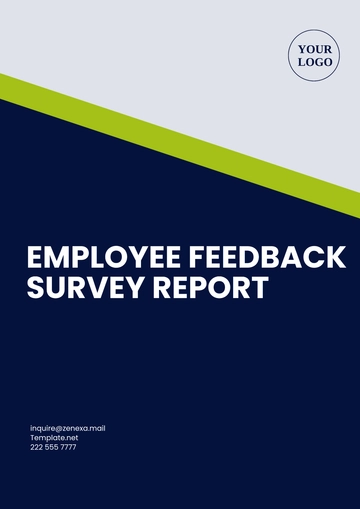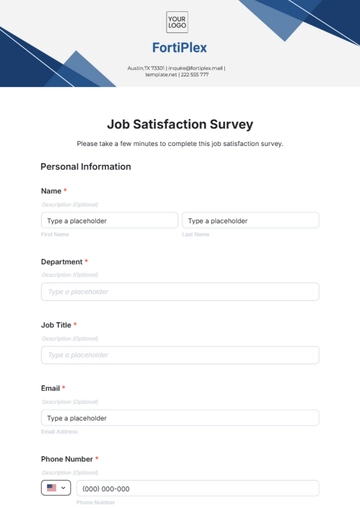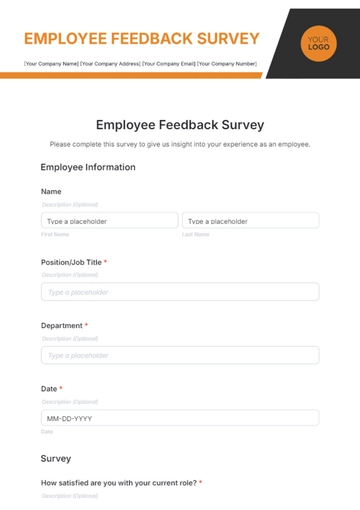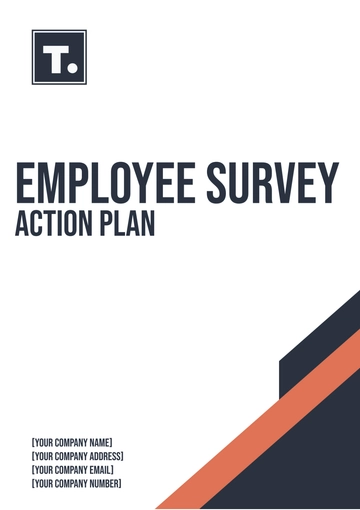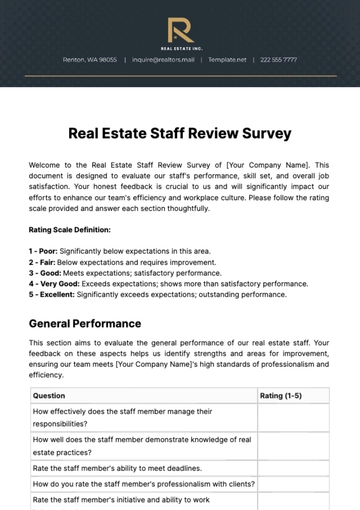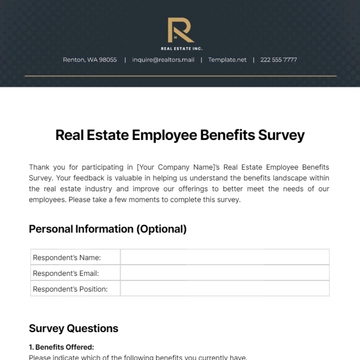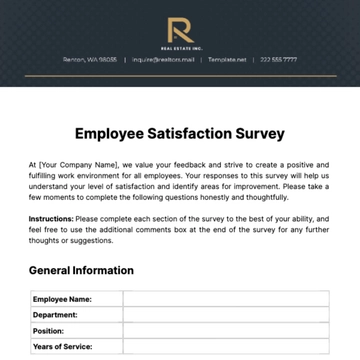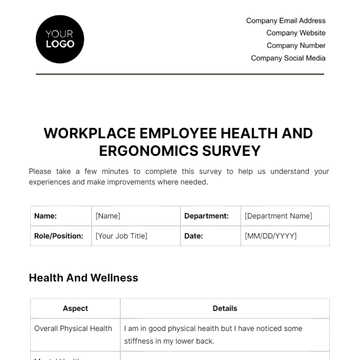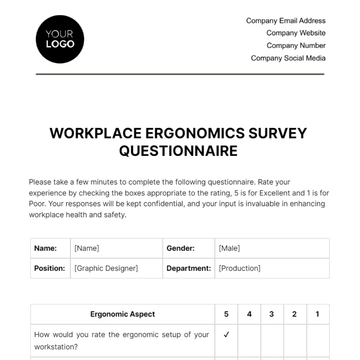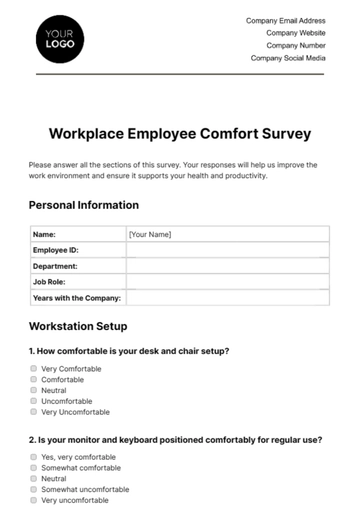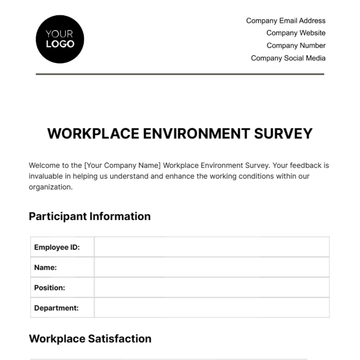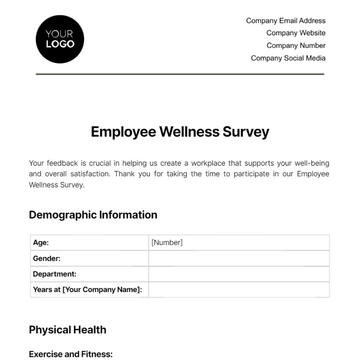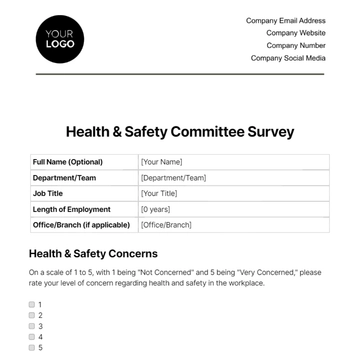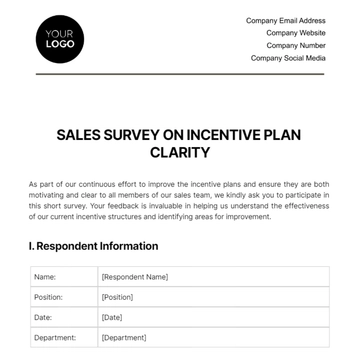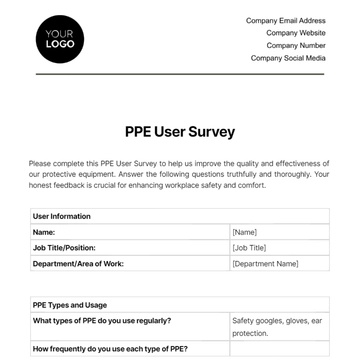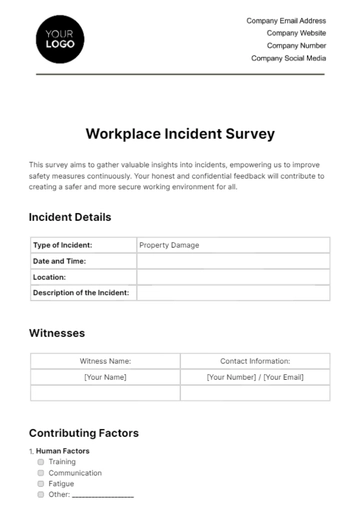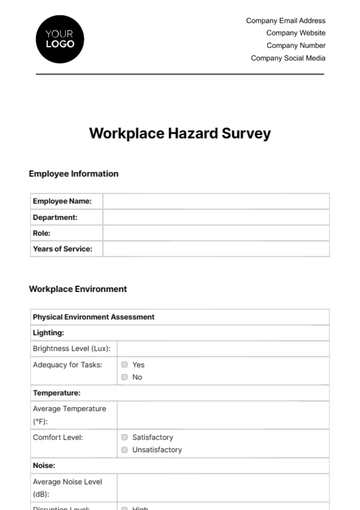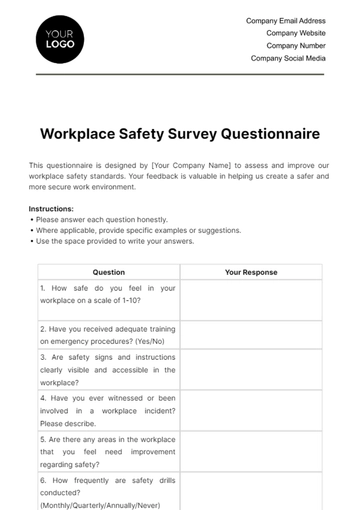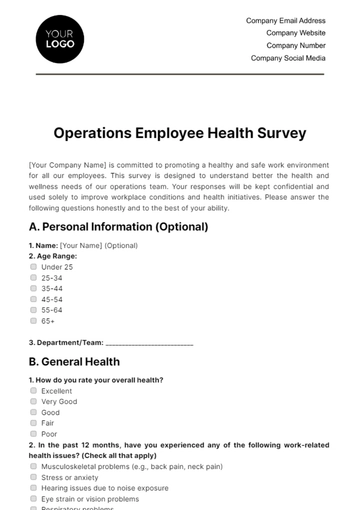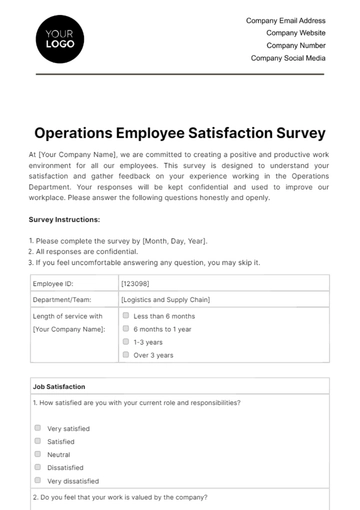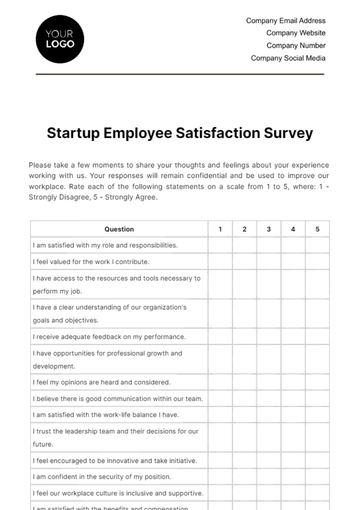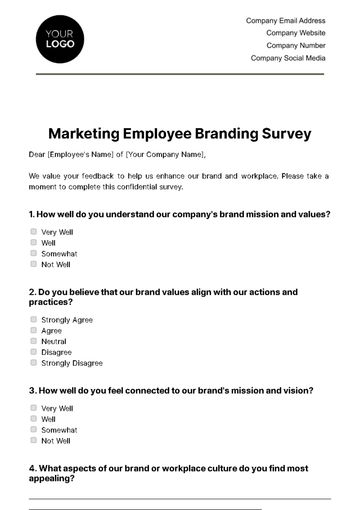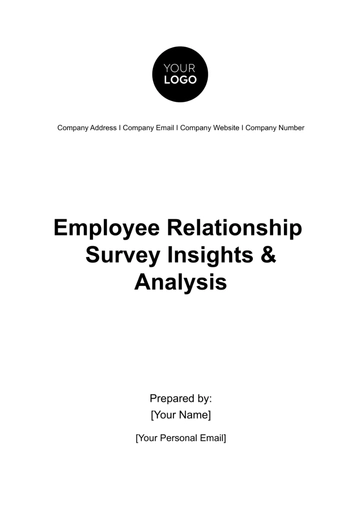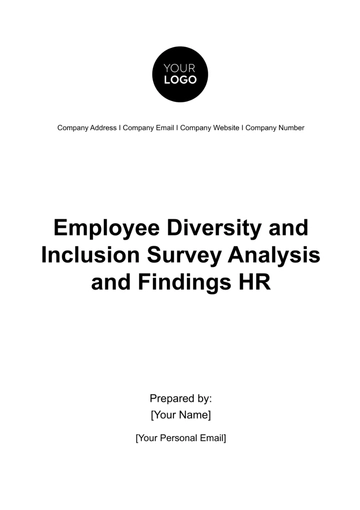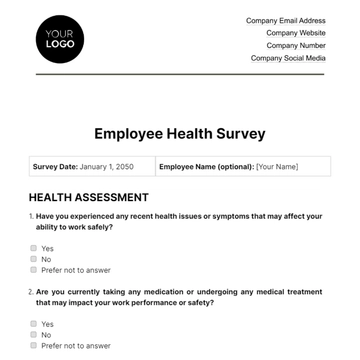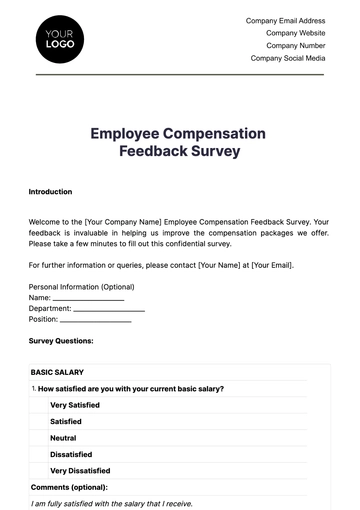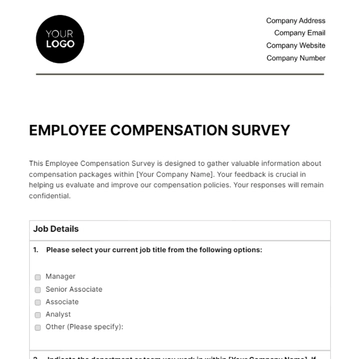Free Employee Relationship Survey Insights & Analysis HR
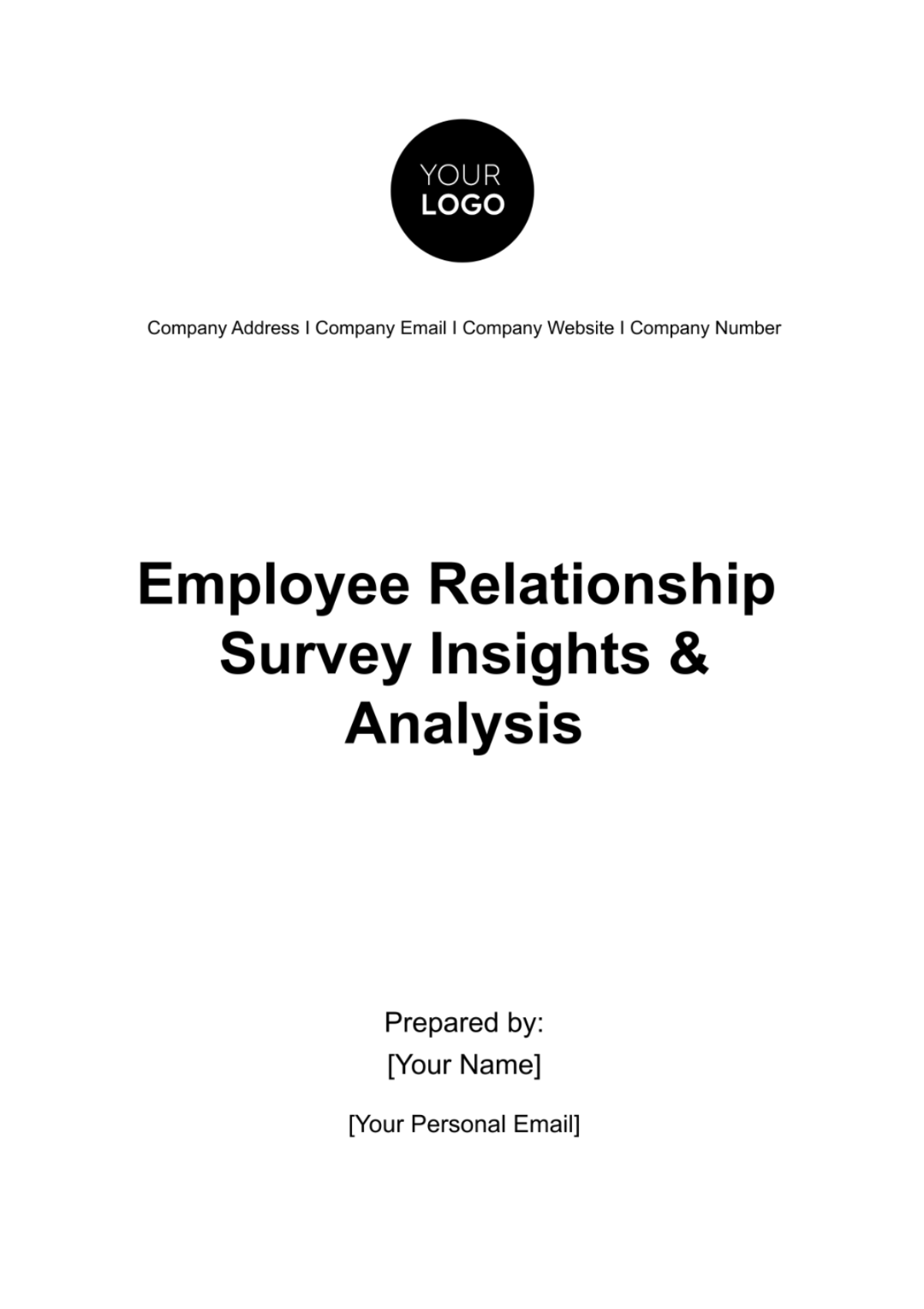
Executive Summary
In the realm of organizational growth and development, understanding the intricacies of employee relationships stands as a cornerstone for success. The Employee Relationship Survey undertaken by [Company Name] has generated significant insights into the state, challenges, and potential areas of improvement concerning interpersonal relationships within our workforce.
Key Takeaways
A majority of employees (approximately 75%) reported satisfaction with their immediate team dynamics, but interdepartmental collaborations remain an area of concern.
Trust and transparency with senior leadership received mixed feedback, indicating areas of both strength and needed improvement.
The need for more frequent, structured platforms for cross-departmental interactions and team-building has been a consistent request across multiple departments.
Recommended Actions
Initiate monthly inter-departmental meetups to foster improved collaborations.
Leadership transparency sessions or open "Ask Me Anything" sessions with senior management might bridge the communication gaps.
Consider an annual team-building retreat focusing on inter-departmental bonding and collaborations.
Introduction
The fabric of any successful organization is woven together by the relationships that its employees share with one another. Recognizing this, [Company Name] initiated the Employee Relationship Survey to get a holistic view of the interpersonal dynamics at play within our organizational structure.
Purpose of the Survey
The primary aim of this survey was to gauge the quality, strengths, and potential areas of improvement in the interpersonal relationships amongst employees, between departments, and with leadership.
Survey Scope and Duration
The survey was conducted over a span of two weeks and covered various dimensions of workplace relationships, from peer-to-peer interactions to employee-leadership dynamics.
Methodology
The survey comprised a mix of Likert scale questions, open-ended questions, and scenario-based queries. This structure was designed to capture both quantitative data and qualitative insights from the respondents.
All employees of [Company Name], spanning all departments and hierarchical levels, were encouraged to participate. The survey saw a commendable response rate of 85%, ensuring a broad representation of perspectives.
The survey was administered digitally using [Survey Platform], allowing participants to answer questions at their convenience, ensuring higher participation rates and candid responses.
Quantitative data were analyzed using statistical tools to identify trends, patterns, and areas of significance. Qualitative feedback was thematically grouped to derive insights into common concerns, praises, and suggestions.
Overall Insights
Understanding the health and dynamics of employee relationships within [Company Name] is critical for fostering a productive and harmonious work environment. This section provides a comprehensive summary of the general trends, satisfaction levels, and key areas of concern as deduced from the Employee Relationship Survey.
General Trends
The overarching patterns from the survey shed light on some defining aspects of our organization's interpersonal dynamics. These general trends provide a panoramic view of employee sentiments and perceptions.
Employee Satisfaction Levels
It's pivotal to gauge the overall satisfaction levels of employees in relation to their interpersonal interactions within the workplace. This provides a clear metric to understand areas that are flourishing and areas that may need attention.
Key Concern Areas
While the survey highlighted several positive aspects of our organizational relationships, it also surfaced some critical concern areas that need to be addressed.
Concern Area | Number of Mentions |
Inter-departmental Communication Barriers | 230 |
Limited Access to Senior Leadership | 180 |
Lack of Regular Team-building Activities | 210 |
Detailed Analysis
Collaboration Metrics
60% of employees reported collaborating with members of other departments at least once a week. 25% mentioned daily interactions, while 15% mentioned rare or no collaborations.
55% of respondents felt that their interdepartmental collaborations were generally effective and goal-oriented. However, 20% felt that these collaborations often lacked clarity or direction.
Communication Efficacy
While 70% of employees stated they received clear instructions during collaborations, 15% reported occasionally facing confusion.
50% felt feedback, whether positive or constructive, was communicated promptly, but 30% felt there was a delay or lack of feedback altogether.
Access to Leadership
45% of employees felt they had regular access to their leadership for discussions, concerns, or feedback. However, 35% expressed the desire for more frequent touchpoints.
55% were aware and felt confident in using the open-door policy, while 20% felt hesitant due to perceived barriers or previous experiences.
Trust & Transparency Levels
An encouraging 65% expressed high levels of trust in the leadership's decisions. Yet, 20% felt uncertain due to lack of communication of certain decisions.
60% appreciated the transparency in organizational decisions and communications, but there's a need to improve upon the 25% who felt left in the dark at times.
Comparative Analysis
To put the survey results into perspective, it's imperative to see how they measure against historical data and industry benchmarks. This section provides an analysis that contextualizes the current status and helps pinpoint areas of growth or decline over time.
Comparison with Previous Surveys
Understanding how the current feedback compares to previous surveys can help identify patterns and gauge the effectiveness of any interventions implemented since the last survey.
Benchmarking against Industry Standards
Comparing our results against industry standards gives us insights into where we stand in the broader business landscape and identifies areas that need urgent attention.
Employee Testimonials & Feedback
Feedback, both positive and constructive, is invaluable in understanding the sentiments of the workforce. This section highlights the voices behind the numbers, offering a more holistic picture of the current dynamics.
Positive Feedback Highlights
"The company has always encouraged open communication. I genuinely feel heard and valued here." – John D., Marketing Department
"Our interdepartmental projects have become much smoother over the past year. Kudos to everyone involved in streamlining the process!" – Sarah L., Operations Team
"The leadership's transparency in decision-making makes me trust their judgment even more." – Manuel R., IT Department
Constructive Criticisms and Concerns
"While I appreciate the collaboration efforts, sometimes the objectives aren't clear, leading to confusion." – Amber K., Sales Team
"I hope we can have more frequent check-ins with our leaders. It makes a big difference in alignment." – Sophie N., Design Department
"Conflict resolution can be more effective. Sometimes, issues resurface after a short while." – Liam P., Customer Support
Recommendations
In light of the survey insights and the subsequent analysis, it's essential to formulate actionable recommendations to improve employee relationships within [Company Name]. These recommendations are divided into immediate actions that address pressing issues and long-term strategies that ensure sustainable improvements.
Immediate Actions
Establish regular open forums or town hall meetings where employees can voice their concerns directly to leadership.
Review ongoing interdepartmental projects and ensure clear objectives and roles to prevent confusion.
Organize immediate training sessions focused on conflict resolution techniques.
Long-term Strategies
Ensure that leaders, especially middle management, are equipped with the tools to lead their teams.
Pair newer employees with veterans to foster relationships and improve departmental dynamics.
Annually review company policies to ensure they remain relevant and address any new challenges or concerns that have arisen.
Action Plan
Having recommendations is a vital first step. Still, without a concrete action plan detailing how these recommendations will be implemented, they run the risk of remaining theoretical. This section outlines a roadmap to bring the proposed recommendations to fruition.
Roles and Responsibilities
Role | Responsibility |
HR Department | Oversee the implementation of all initiatives, provide necessary resources, and gather feedback. |
Department Heads | Ensure that the initiatives are adopted within their respective teams and report progress. |
Communications Team | Facilitate open forums, communicate updates, and manage feedback channels. |
Timeline & Milestones
Month | Milestone |
Month 1 | Kick off open forums and communication channels. |
Month 2-3 | Start conflict resolution training sessions. |
Month 4-6 | Launch the mentorship program. |
Month 7-12 | Annual review of organizational policies. |
Resources and Budget
Resource | Estimated Cost |
Training Programs | $5,000 |
Communication Platforms | $1,500 |
Mentorship Program Setup | $2,000 |
Policy Review Sessions | $1,000 |
Conclusion
Building and nurturing positive employee relationships is not a one-time endeavor; it's a continuous journey. Understanding the importance of these relationships and the dynamics that affect them is central to creating a healthy and productive work environment. [Company Name] recognizes this and, as such, is committed to ongoing efforts in this area.
In line with our commitment to continuous improvement, [Company Name] plans to conduct these relationship surveys annually. This will help track progress, evaluate the effectiveness of implemented strategies, and identify new areas of focus. Beyond the annual surveys, it's also in the pipeline to introduce more frequent, but shorter, feedback mechanisms. These could be in the form of quarterly pulse surveys or open forums, ensuring that the voice of the employee remains central to all our relationship-building endeavors.
In closing, [Company Name]'s dedication to fostering positive employee relationships is unwavering. It is our belief that by prioritizing these relationships, we are not only enhancing the work experience for our employees but also driving the company towards greater heights of success and innovation.
- 100% Customizable, free editor
- Access 1 Million+ Templates, photo’s & graphics
- Download or share as a template
- Click and replace photos, graphics, text, backgrounds
- Resize, crop, AI write & more
- Access advanced editor
Dive deep into the pulse of your organization with this Employee Relationship Survey Insights & Analysis HR Template. Capture employee sentiments, analyze relationship dynamics, and derive actionable insights. Tailored for HR experts, it translates feedback into transformative strategies.
